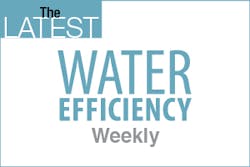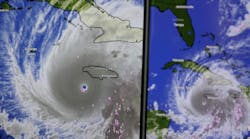State Water Board Issues Groundwater Storage Permit to Capture Rain Season High Flows
Today the State Water Resources Control Board (State Water Board) issued its first temporary groundwater storage permit to the Scott Valley Irrigation District to capture high winter and spring flows for local groundwater storage and recharge. The permit is the first in what is expected to be a series of temporary permits issued for this type of water diversion and use.
The temporary permit application was submitted Jan. 13 by the District in coordination with staff at the University of California at Davis, the California Farm Bureau Federation, Scott River Water Trust and others. The District proposes to divert up to 5,400 acre-feet of water during high water events using existing diversion structures. Water will be diverted from the Scott River using the District’s unlined earthen canal system and spread onto as many as 3,475 acres of existing, dormant agricultural fields within the District’s service area for infiltration.
“The predicted high rainfall events associated with El Niño this year provide an opportunity for accelerating groundwater recharge that we so critically need,” said State Water Board Chair Felicia Marcus. “This is the first of what we hope are many new opportunities for creative thinking and community effort to take advantage of storm flows everywhere we can. My thanks to everyone who helped allow us to turn this around in just a few days.”
Such temporary permits can reduce downstream flood risk and alleviate the effects of heavy groundwater pumping in the short-term, as well as demonstrate the feasibility of using available high water flows to recharge local groundwater.
The permit, consistent with water rights priorities and protections for fish and wildlife, is anticipated to enhance approximately 26 miles of habitat for fisheries downstream of the District’s diversion dam. The Scott River and its tributaries support runs of Upper Klamath-Trinity rivers Chinook, Klamath Mountains Province steelhead, and state and federally threatened Southern Oregon-Northern California Coast coho salmon. Adding spring and summer river flows for salmonids through winter diversion to underground storage will increase groundwater base flow to the Scott River and improve conditions for salmonids.
A portion of the water diverted under this permit will be used to continue a study by researchers at UC Davis studying the infiltration effects of winter application of water on 15 acres of agricultural land in the Scott River Valley. The diversion season will last until the end of March.
On Nov. 13, 2015, Governor Edmund G. Brown Jr.’s Executive Order B-36-15 directed the State Water Board to prioritize temporary water right permits to accelerate approvals for projects that enhance the ability of a local or state agency to capture high precipitation events this winter and spring for local groundwater storage or recharge, consistent with water rights priorities and protections for fish and wildlife.
To encourage these types of temporary permits, the State Water Board reduced the temporary permit application filing fee. For more information on the application process for groundwater recharge/storage visit the State Water Board webpage.


